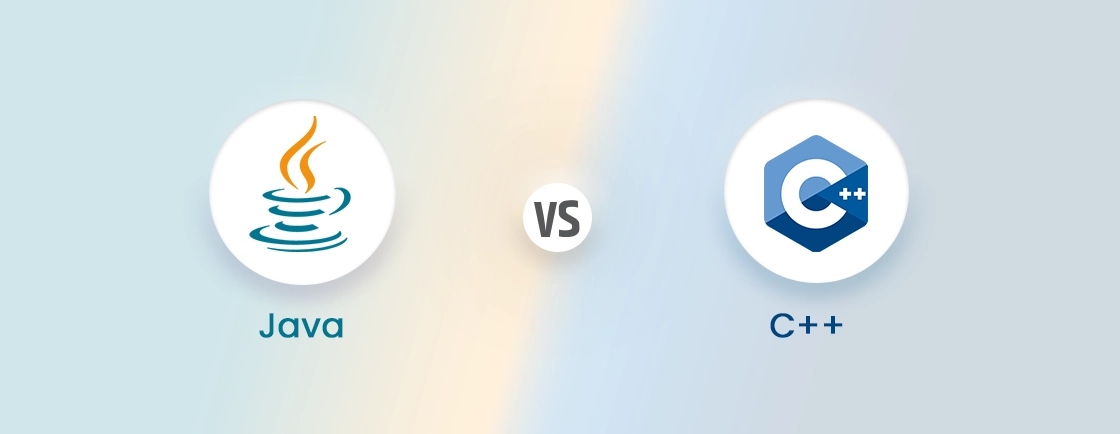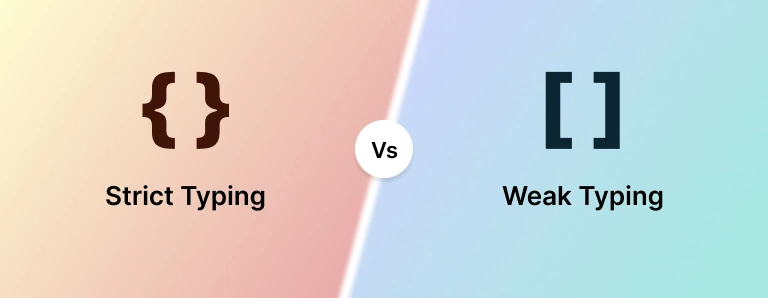Table of Contents
When it comes to building and maintaining a website, choosing the right tool can make all the difference. Two popular options, WordPress and Dreamweaver, might leave you wondering, which is better?
To help you make a better choice according to your needs, we have prepared this guide. In this blog, we’ll explore both the tools with features and common usage. Plus, we’ll dive into detailed comparisons that web developers consider to make the right choice. With that, let’s begin!
What is WordPress?
WordPress is one of the best content management systems (CMS) that allows users to create, manage, and publish websites easily. Initially released in 2003 as a blogging platform, WordPress has evolved into a versatile CMS.
It powers over 43% of websites, making it the most widely used CMS. It’s built on PHP and MySQL, offering a user-friendly interface and extensive customization options. It comes with thousands of themes and plugins to make the website development process efficient.
Key Features of WordPress
- User-Friendly Interface: WordPress’s admin dashboard makes it easy for beginners to manage content and customize their websites.
- Themes and Customization: Thousands of themes and the WordPress Customizer allow for easy customization of website design without coding.
- Plugins and Extensibility: Expand WordPress’s functionality with plugins for features like eCommerce, SEO, and social media integration.
- SEO-Friendly: WordPress is designed for SEO, with clean HTML and plugins like Yoast SEO to optimize content for search engines.
- Responsive Design: WordPress themes automatically adjust to different screen sizes, ensuring websites look and function well on all devices.
- Built-In Blogging Capabilities: WordPress offers features for content creation and management, making it ideal for bloggers.
- Media Management: Easily upload, manage, and edit media files like images and embed videos within WordPress site.
- Custom Content Types and Taxonomies: Create content structures and custom taxonomies beyond standard posts and pages for specific needs.
- Security Features: WordPress prioritizes security with regular updates and security plugins to protect websites from threats.
- Multilingual Support: Create and manage content in multilingual sites using plugins like WPML or Polylang.
- Scalability: WordPress can handle websites of all sizes, from small blogs to large eCommerce sites.
Common Uses of WordPress
- Blogging: Originally built for blogging, WordPress is still one of the best platforms for bloggers due to its ease of use and vast array of features.
- Business Websites: Many businesses use WordPress to create professional websites to showcase their services, portfolios, and client testimonials.
- eCommerce: With plugins like WooCommerce, WordPress can be transformed into a powerful eCommerce platform. It is capable of handling product listings, payments, inventory management, etc.
- Educational Websites: It is often used by educational institutions for creating websites with course catalogs and learning management systems.
- News and Magazine Sites: WordPress’s strong content management capabilities make it a popular choice for websites that require frequent content updates.
WordPress user-friendly interface and library of themes and plugins make it a preferred choice for building websites efficiently. By leveraging these capabilities, WordPress development company can build sites that are well-designed and perform optimally.
What is Dreamweaver?
Adobe Dreamweaver is a web development software originally developed by Macromedia and later acquired by Adobe Systems. It’s primarily used for designing, coding, and editing websites. Dreamweaver provides a visual interface that allows users to create web pages without writing extensive HTML, CSS, and JavaScript code.
It is a versatile development tool that provides a combination of visual (WYSIWYG) and code-based editing capabilities. Although not as popular as WordPress, Dreamweaver is still used by 0.3% of all the websites.
Key Features of Dreamweaver
- WYSIWYG Editor: Dreamweaver provides a visual interface where you can see how your website will look as you work. This makes it easier to create and edit web pages without needing to write HTML code.
- Code Editing: For those who prefer to work directly with code, Dreamweaver offers a code editor with features like syntax highlighting, code completion, and code validation. This helps you write clean and efficient code.
- FTP Integration: Dreamweaver integrates with FTP (File Transfer Protocol) to allow you to upload your website files to a web server. This makes it easy to publish your website.
- CSS Support: It provides full support for CSS (Cascading Style Sheets), which allows you to control the appearance of your website. You can create and edit CSS stylesheets directly in Dreamweaver.
- JavaScript Support: Dreamweaver also supports JavaScript, which can be used to add interactive elements to your website.
- Live View: Dreamweaver’s Live View feature allows you to preview your website in a web browser as you work so you can see how it will look on different devices.
- Collaboration: Dreamweaver supports collaboration, allowing multiple users to work on the same website at the same time.
- Site Management: Dreamweaver provides tools for managing your website, such as sitemaps, file management, and version control.
- Extensibility: Dreamweaver can be extended with third-party extensions and plugins to add new features and functionality.
Common Uses of Dreamweaver
- Web Design and Development: It is widely used for designing and developing websites, from simple pages to complex web applications. Its combination of visual and code editing tools makes it a popular choice for both designers and developers.
- Prototyping and Mockups: Dreamweaver’s visual editing capabilities allow designers to quickly create prototypes and mockups of web pages. That makes it easy to make changes before building a full-fledged website.
- Learning and Education: Its user-friendly interface and visual tools make it a valuable educational resource for teaching web design and development. Beginners can start with the visual tools and gradually learn to code.
- Responsive Web Design: With features like Fluid Grid Layouts and Bootstrap integration, you can create responsive web designs. That means your site will adapt to devices of various display sizes.
- eCommerce and Interactive Websites: Dreamweaver allows integration with various backend technologies and frameworks. That makes it easy to build interactive and eCommerce sites.
Dreamweaver offers a versatile web development environment, combining visual design and coding. Its flexibility appeals to beginners and web development experts. However, cost and complexity might prevent some developers from using it.
WordPress vs Dreamweaver
| Aspect | WordPress | Dreamweaver |
|---|---|---|
| Purpose | Content Management System (CMS) | Web Development Software |
| Target Audience | Bloggers, small businesses, non-technical users | Web designers, developers, technical users |
| Primary Focus | Content creation and management | Web design and development |
| Interface | User-friendly, WYSIWYG editor | Visual editor and code editor |
| Coding | Minimal coding required (themes, plugins) | Extensive coding required (HTML, CSS, JavaScript) |
| Customization | Extensive customization through themes and plugins | High level of customization through code |
| Hosting Requirements | Requires a web server (LAMP stack commonly used); compatible with most hosting providers. | Runs locally for development; needs FTP/SFTP for deploying to a web server. |
| Integration | Integrates easily with third-party tools, CRM systems, and APIs. | Supports integration, but requires custom coding to connect with third-party tools. |
| SEO | SEO-friendly out of the box; numerous SEO plugins like Yoast available. | SEO must be managed manually; no built-in SEO tools. |
| Cost | Free (open-source), paid premium themes and plugins | Paid software (after a free 7-day trial of the software) |
| Features | Built-in SEO, eCommerce, community features | Advanced code editing, live preview, integration with other Adobe products |
| Use Cases | Blogs, websites, eCommerce stores, forums | Web design projects, web applications, cross-browser compatibility |
Comprehensive Difference Between WordPress and Dreamweaver
WordPress and Dreamweaver are both popular tools for web development, but they serve to cater to different user needs. Let’s delve into a comprehensive comparison to help you understand their key differences and find which one is best suited for your project.
Customization
WordPress offers extensive customization options through its vast library of plugins and themes. Users can easily add functionality such as contact forms, galleries, and eCommerce capabilities with just a few clicks. The platform’s flexibility makes it suitable for various types of websites, from personal blogs to complex corporate sites.
Dreamweaver provides a high level of customization through direct code editing. Users have full control over HTML, CSS, and JavaScript, allowing for precise customization of website elements. Plus, Dreamweaver supports integration with other Adobe tools, enhancing its design and customization capabilities.
Verdict: WordPress offers easier customization through themes and plugins. Conversely, Dreamweaver provides more granular control for those comfortable with coding.
Hosting
WordPress requires a web hosting service to run. Many providers offer optimized WordPress hosting solutions with one-click installation options, making it easy to get started. WordPress hosting can be scalable, from basic shared hosting for small websites to dedicated servers for high-traffic sites.
Dreamweaver is a local development tool that doesn’t come with built-in hosting options. Users must manually set up a hosting environment and use FTP to upload files to a server. This setup requires more technical knowledge, but it allows for greater flexibility in choosing and configuring hosting environments.
Verdict: WordPress offers a more straightforward hosting setup, especially with hosting providers offering one-click installs. On the other hand, Dreamweaver requires more manual configuration and management.
Design
WordPress excels in design flexibility with thousands of free and premium themes available. Users can choose a theme that fits their brand and customize it using the built-in theme customizer. Additionally, WordPress supports the use of page builders like Elementor and Beaver Builder for even more design control.
Dreamweaver offers robust design capabilities through its visual editor and integration with Adobe’s Creative Cloud. Users can design directly in the visual interface and make real-time changes that reflect in the code. This makes Dreamweaver a preferred choice for designers who want to see their work visually with the option to customize code.
Verdict: WordPress provides design flexibility suitable for beginners and non-designers, thanks to themes and page builders. Dreamweaver caters more to professional designers who prefer a visual editor with more detailed adjustments.
Performance
Performance in WordPress can vary based on the hosting provider, theme, and number of plugins installed. Optimized hosting, caching plugins, and CDN integration can significantly enhance performance. However, poorly coded plugins or themes can slow down a WordPress site.
Dreamweaver’s performance depends on the user’s coding and optimization practices. Since it allows for direct control over the code, developers can optimize the site for speed from the start. It doesn’t come with any heavy third-party plugins, leading to potentially faster websites.
Verdict: Both WordPress and Dreamweaver can achieve good performance with proper optimization. WordPress may require less manual optimization, while Dreamweaver offers more control over performance factors.
Security
WordPress offers robust security features, but its popularity makes it a target for hackers. Users need to regularly update WordPress core, themes, and plugins to ensure security. There are also many security plugins available to maintain site protection, including WordPress firewall and malware scanning.
Dreamweaver itself doesn’t provide security features since it is a local development tool. Security is entirely dependent on the user’s coding practices and the security measures implemented on the hosting server. Developers must use best web security practices to prevent vulnerabilities.
Verdict: WordPress provides strong security with the help of plugins, but regular updates are crucial. Dreamweaver’s security relies on the developer’s expertise, offering no built-in security support.
SEO & Visibility
WordPress is highly SEO-friendly out of the box. It offers numerous plugins, like Yoast SEO and All in One SEO Pack, to help users optimize their content for search engines. It also allows for easy editing of meta descriptions, titles, and other elements, making it simple to improve WordPress SEO.
SEO in Dreamweaver is manual, requiring users to have a good understanding of SEO practices. While Dreamweaver doesn’t offer built-in SEO tools, it allows for direct code editing to implement SEO best practices manually. This level of control is beneficial for SEO experts.
Verdict: WordPress offers better SEO features out of the box, while Dreamweaver requires more manual optimization.
Cost
WordPress itself is free to use, but development costs can arise from hosting, premium themes, plugins, and custom development. The overall cost is scalable, making WordPress accessible for individuals and businesses of all sizes.
Dreamweaver requires a subscription to Adobe Creative Cloud, which can be costly for users who only need it for web development. Additional costs include hosting, domain registration, and any other development tools needed.
Verdict: WordPress can be more cost-effective due to its free nature and the availability of affordable hosting options. Conversely, Dreamweaver’s subscription model makes it a more expensive option for those who do not use other Adobe tools.
Both WordPress and Dreamweaver have their unique strengths and are suited for different types of users. WordPress is ideal for those looking to have a user-friendly, customizable CMS. On the other hand, Dreamweaver is preferable for those having hands-on control over their code and design.
Final Verdict
Both WordPress and Dreamweaver offer numerous features to build and maintain sites efficiently. WordPress, with its plugins and themes, makes development easy and requires low coding expertise. On the other hand, Dreamweaver provides higher customizability but also needs more manual coding. Here is how you can choose:
- If you prioritize ease of use and a vast ecosystem of plugins and themes, WordPress is an excellent option.
- If you require greater control over the design and development process and are comfortable with coding, Dreamweaver may be a better fit.
You can select the best tool based on your specific needs and skill level to leverage them. If you are still confused or need development assistance, hire web developers.
FAQs About WordPress vs Dreamweaver
Can I use WordPress and Dreamweaver together?
Yes, you can use both tools together. Some developers use Dreamweaver for initial design and coding, then integrate the site with WordPress for content management. This allows for a mix of Dreamweaver’s design flexibility and WordPress’s powerful CMS features.
Is WordPress better for SEO than Dreamweaver?
WordPress is generally considered better for SEO due to its built-in features and the availability of SEO plugins. That makes it easy to optimize content for search engines. Dreamweaver requires manual implementation of SEO best practices, which can be more time-consuming.
Do I need coding skills to use WordPress or Dreamweaver?
You don’t need extensive coding skills to use WordPress, as many of its features can be managed through plugins and themes. However, coding knowledge can enhance customization. Dreamweaver, on the other hand, is more code-oriented, so having coding skills is required to use it effectively.
Compare the best tech side by side.
Our in-depth comparisons help you see features, pros & cons, and choose the right tools confidently.





